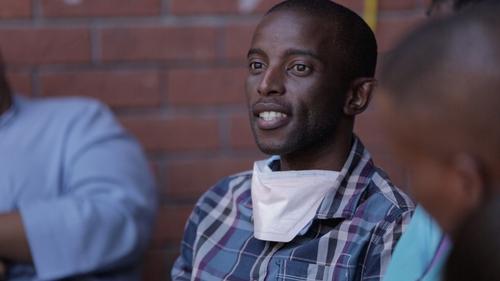Cape Town, 10 December 2013—The international medical humanitarian organisation Médecins Sans Frontières (MSF) is calling for increased scale-up of ‘viral load’ HIV treatment monitoring in order to help improve people’s HIV treatment outcomes. At the ICASA HIV/AIDS conference in Cape Town, South Africa, MSF reported on new findings on the benefits of viral load monitoring for people on antiretroviral therapy and strategies to reduce the costs.The Global Fund to Fight AIDS, Tuberculosis, and Malaria and the United States’ PEPFAR programme—the two main funders of global HIV treatment—need to act now and use their large purchasing power to negotiate drastically lower prices for viral load tests.
“The benefits of implementing viral load testing are really obvious—it's the gold standard for treatment monitoring, but it’s largely unavailable in developing countries because cost is a major factor,”said Dr. Gilles van Cutsem, Medical Coordinator of MSF in South Africa. “Prices need to come down so that countries can scale up, and new research shows this is possible.”

A 2012 MSF survey of 23 resource-limited countries showed that while virtually all countries included viral load monitoring in their treatment guidelines, it was available in only four. The latest World Health Organization HIV treatment guidelines call for people to receive a viral load testonce a year to ensure their treatment is working,and to identify those people who are either failing treatment, and must be switched to different drugs, or need extra adherence support to get back on track.Viral load is much more accurate at detecting problems than CD4 testing, which is commonly used today, and it can also prevent people from being unnecessarily switched to more expensive ‘second-line’ medicines. Ideally, viral load testing confirms the level of HIV in a person’s blood is ‘undetectable,’ which means antiretroviral medicines have suppressed the virus maximally. This is the best for their own health and also for their communities, as undetectable HIV is very unlikely to be transmitted to others.
An MSF study being presented at the ICASA conference looked at the first-ever viral load test among adults on ART in three African countries starting to implement viral load (Kenya, Malawi, and Zimbabwe). MSFfound thatamongpeoplewho were suspected of failing their treatment based on clinical signs or immunological criteria (CD4 testing) alone, only 30% actually had an elevated viral load, indicating a problem. This means that 70% of peoplecould have been switched unnecessarily to second-line treatment if viral load had not subsequently been used to confirm treatment failure.
Additional research showed that costs of viral load tests can come down much further.
MSF research shows that the cost of reagents and consumables—materials needed to run each viral load test—accounts for up to 75% of the full cost of running a viral load test (which includes machines, transport, human resources, etc.) Prices paid for the reagents and consumables range widely among several African countries with a high burden of HIV, from US$11 - $55 per test. PEPFAR and the Global Fund should pool their procurement, thereby making use of projected large volumes to proactively negotiate lower prices with companies. Additional data shows that the estimated cost of manufacturing reagents and consumables is as low as$1.61 - $4.50 for the three most commonly used tests used in Africa, supplied by Roche, Abbott and bioMérieux. Taking into account the real cost of reagents and consumables, with pooled procurement, the price of reagents and consumables could be as low as $7 or less per test.
“If we want to close the gap between rich and poor countries when it comes to making sure people’s HIV treatment is working, we need to see the price of viral load testing come down fast,” said Sharonann Lynch, HIV Policy Advisor for MSF’s Access Campaign. “The big agencies paying for global HIV treatment—the Global Fund and PEPFAR—need to wake up and see the potential they have to push viral load test prices downand into the reach of countries affected by the epidemic.”
Visit the MSF at ICASA HIV/AIDS conference website





